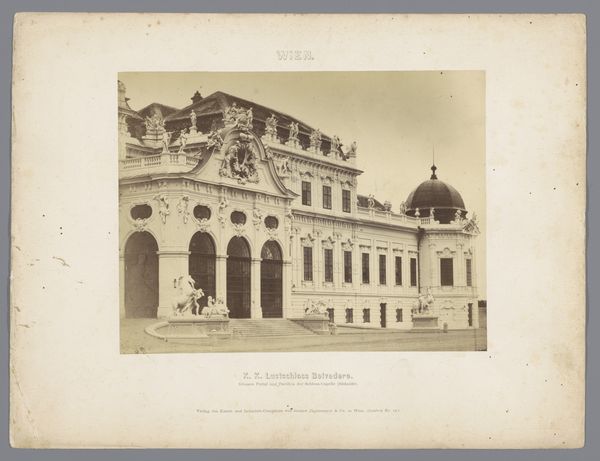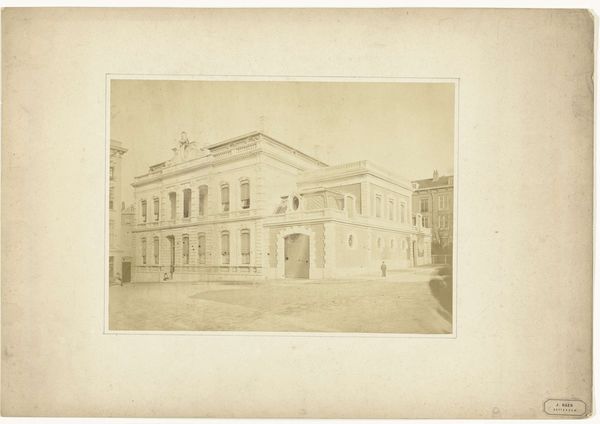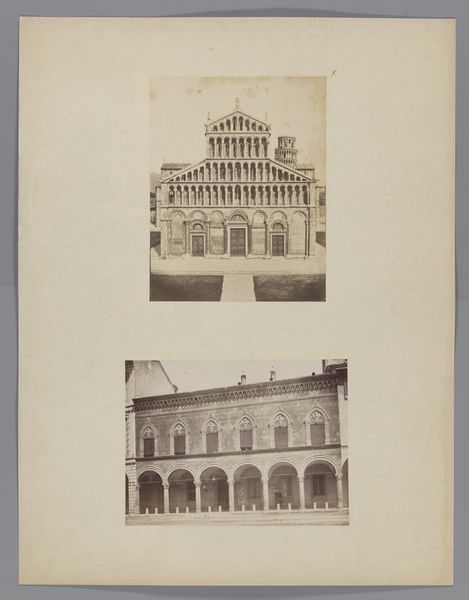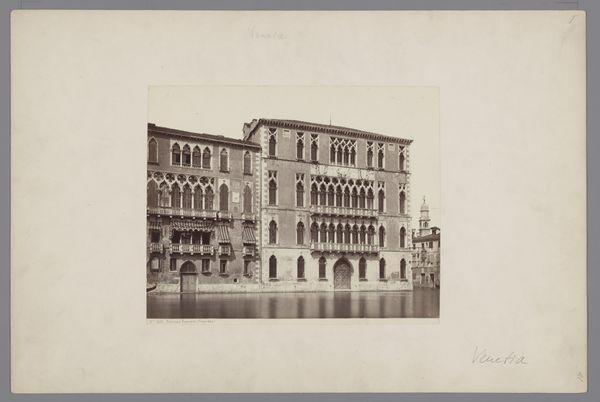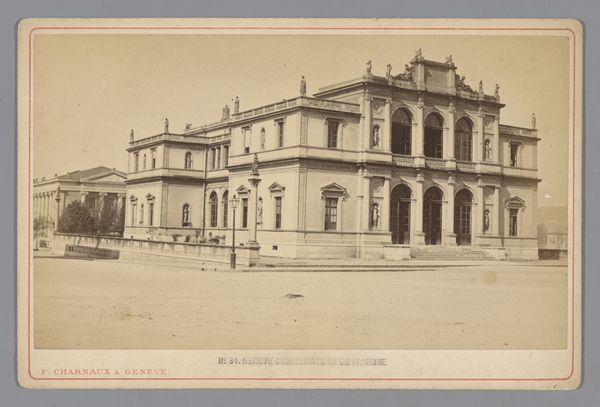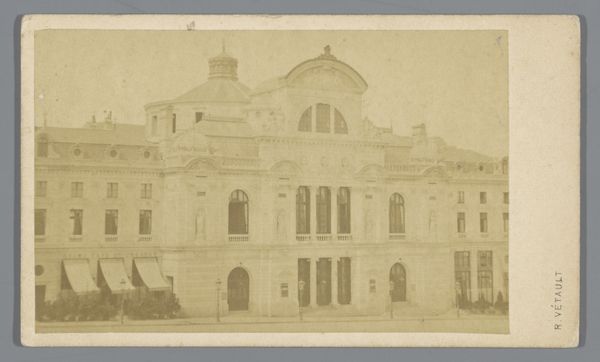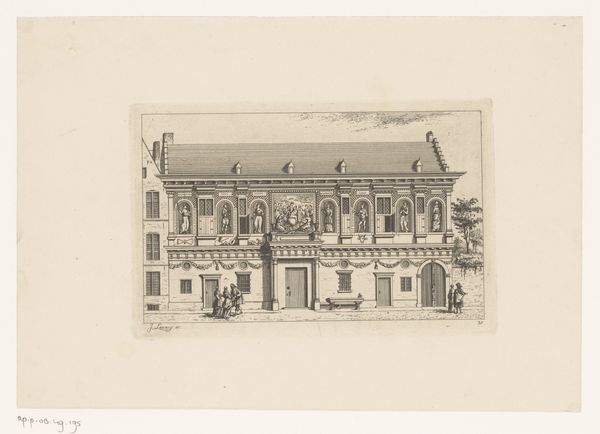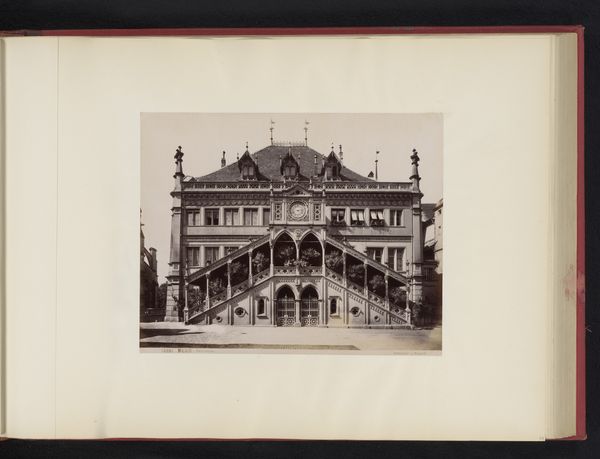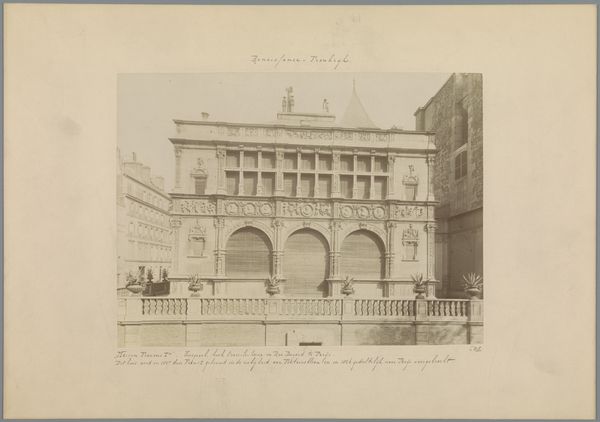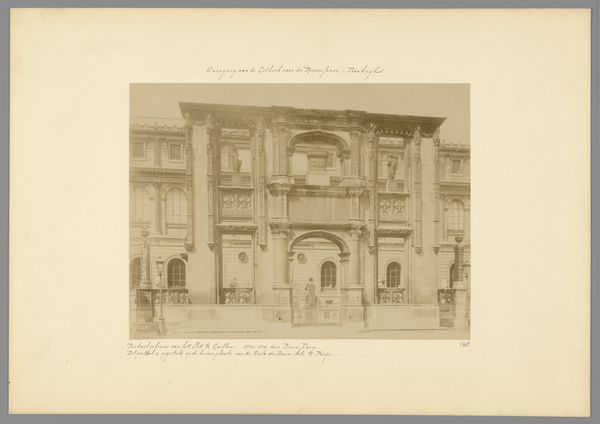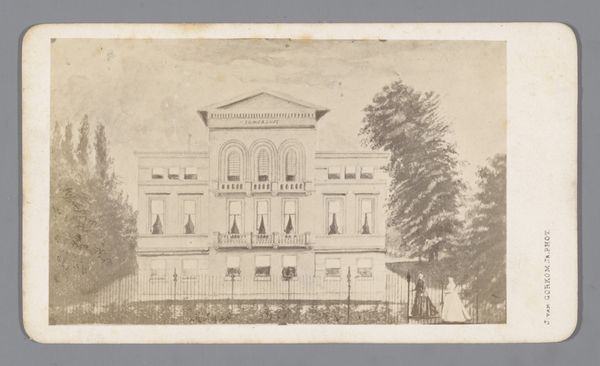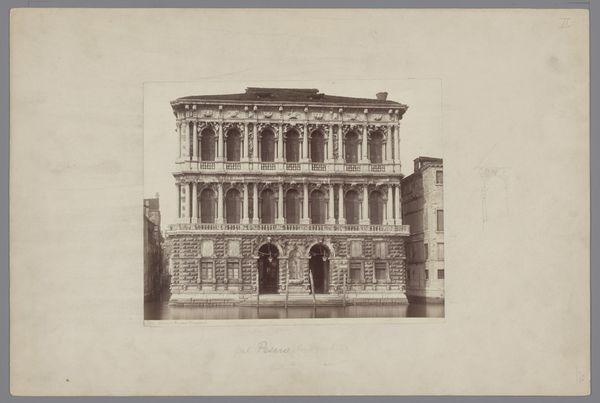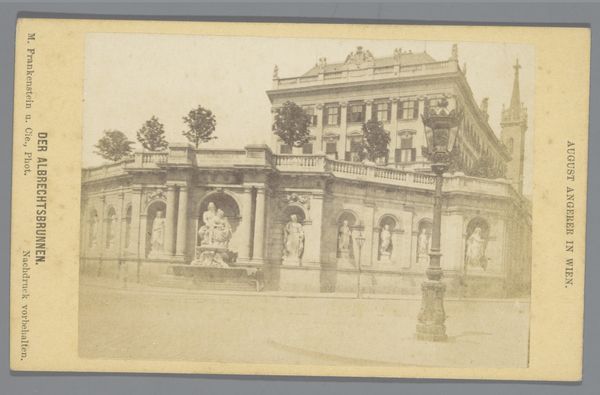
Dimensions: height 350 mm, width 471 mm
Copyright: Rijks Museum: Open Domain
Curator: This is an image of the Galleria Vittorio Emanuele II in Milan, dating to sometime between 1861 and 1878. It seems to be a photographic print of a maquette of the Galleria. Editor: My first impression is one of classical orderliness. The symmetrical facade, the arches… It feels very… grounded, stable. Curator: That's precisely the Neoclassical architectural influence at play. These forms, derived from antiquity, served a very particular purpose during the rise of Italian nationalism. The Galleria, completed after the unification of Italy, became a symbolic hub, celebrating progress, commerce, and national identity. Editor: And that triumphant arch at the center, crowned with figures… It really reinforces that celebratory aspect, doesn’t it? Arches are always potent symbols of victory and passage, framing a journey, or in this case, a cultural achievement. The glass dome itself implies the aspiration and grand ambitions. Curator: Exactly. This isn't just about beautiful architecture; it's about power structures made manifest in stone, brick, and glass. It projects Milan as a modern capital of Europe. The very act of memorializing it via photograph helps disseminate that constructed image. Editor: So the symbols work on multiple levels then—on an immediately recognizable, aesthetic level, but also as powerful reminders of what Italy aspires to be? Do you think the act of photographing the maquette intentionally reduces it, perhaps even to demystify this construction of power? Curator: It certainly adds a layer of representation. This is not the Galleria itself, but a miniature intended for planning or presentation. Photography here may democratize access, but it also further solidifies the iconography of national progress through a mediated view. Editor: Looking closer at those figures atop the arch, they're not simply allegorical, but embody civic ideals, offering a visual code for the aspirations of this new nation. Fascinating how an architectural model, through the lens, becomes such a loaded document. Curator: Indeed. This seemingly simple photograph gives us much to consider about the power of images and the complex interplay between architecture, nationalism, and representation during that period. Editor: Yes, reflecting on the visual symbols of that time definitely sheds new light on their present social and cultural values.
Comments
No comments
Be the first to comment and join the conversation on the ultimate creative platform.
